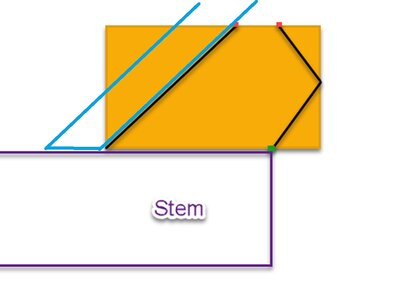HeheWell we will know more when you find out how well it holds together.
The lesson is: One thing is to understand a nautical chart, another is to sail a ship
Last edited:
 |
As a way to introduce our brass coins to the community, we will raffle off a free coin during the month of August. Follow link ABOVE for instructions for entering. |
 |
 |
The beloved Ships in Scale Magazine is back and charting a new course for 2026! Discover new skills, new techniques, and new inspirations in every issue. NOTE THAT OUR FIRST ISSUE WILL BE JAN/FEB 2026 |
 |
HeheWell we will know more when you find out how well it holds together.
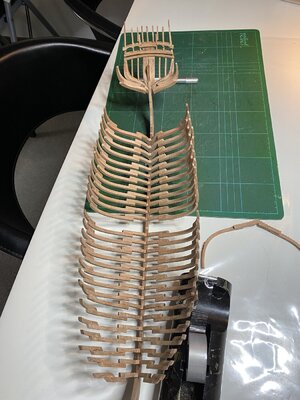
you are a brave manAs I said, I have kinda big hands and I found the space inside the building berth extremely tight. I got really annoyed having to use tweezers for everything so I have decided to build the whole ship outside the berth:
View attachment 195732
Nah, I'm kidding. Even though I found it perfectly okay when I tested it during dryfit I realized anyway - after I had glued 90% of the frames to the keel - that some of those frames sitting on the top of the vertical walls was a little high compared to their neighbours. Hence, I took it all out of the berth and sanded away the steps on the vertical walls and put it all back in the berth again. Took a while to move every single frame one by one in small steps, a fraction of a inch at a time.
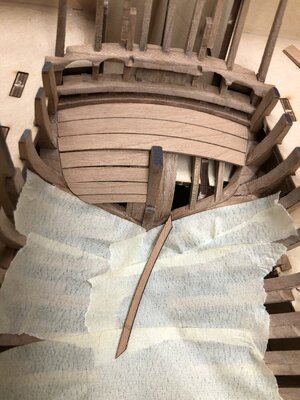
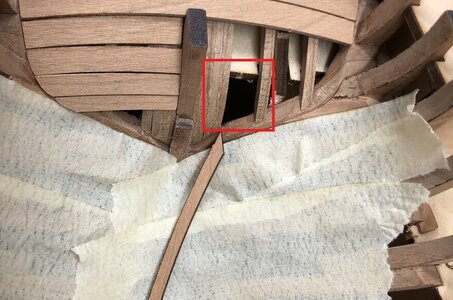
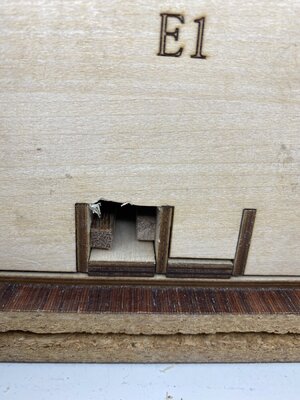
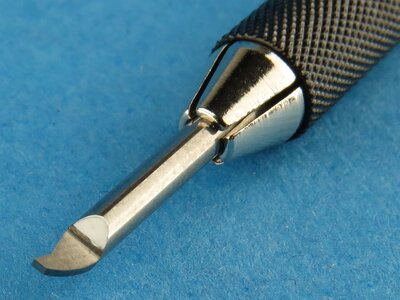

very nice!
well done Poul
Hey Poul if you ever change your mind about the Carlsberg, gimme a shout and I’ll come over to help you. What are friends forI would like to share a small enhancement to this hint of Uwe's:
"PS: a small tip,: after two times a small piece was falling between the frames inside the jig, I covered the gaps between the frames with some masking tape, so that the pieces can not be lost in the "nirvana" of the jig - it is not so easy to get them out"
View attachment 195908
While it is true that it is not so easy to get parts out from under the frames there do exist places that are much worse. I have seen some pretty tight restrictions in cave systems in the Yucatan Peninsula but nothing compared to this one:
View attachment 195911
One of my ship builders who tried to cary frame 40 all by himself accidently stumbled and somehow both he and frame 40 dropped down that restriction into the cave below. Did I mention that I have big hands? I immediatelyy called in a SAR team but even for those guys a rescue attempt through the restriction failed.
In the end we had to dig a tunnel from the outside into the cave:
View attachment 195913
Thus I'd suggest to cover also these restrictions (for as long as possible)
BTW, I have also slightly modified another of Uwe's tricks. Some weeks ago I visited a model shop in Denmark to buy some brass blackening. While I was there I also put a few other small items in the shopping basket, a couple of paintbrushes, a few scalpel blades and a small 0.3 mm engraving blade. I have absolutely no idea why I bought the engraving blade. Somehow it went into the shopping basket totally impulsive. There was no price tack on it but I reckoned the price would be around 1$.
I have been suffering severely from posttraumatic stress disorder ever since I got the bill. I paid 430 DKK for this tiny blade. It makes me so depressed thinking that I could have bought more than 150 bottles of good Carlsberg beer instead. I did not even have a clue what it could be used for. But now I have at least found some use for it: Uwe told that he is using a small chisel to remove the char between the frame futtocs. Did I mention that I have big hands? My chisels are also big so I tried this engraving blade instead and it actually works pretty good.
View attachment 195914
Great details of your "experience" with the cave and the "did I mention, that I have big hands......" - lol lol lolI would like to share a small enhancement to this hint of Uwe's:
"PS: a small tip,: after two times a small piece was falling between the frames inside the jig, I covered the gaps between the frames with some masking tape, so that the pieces can not be lost in the "nirvana" of the jig - it is not so easy to get them out"
View attachment 195908
While it is true that it is not so easy to get parts out from under the frames there do exist places that are much worse. I have seen some pretty tight restrictions in cave systems in the Yucatan Peninsula but nothing compared to this one:
View attachment 195911
One of my ship builders who tried to cary frame 40 all by himself accidently stumbled and somehow both he and frame 40 dropped down that restriction into the cave below. Did I mention that I have big hands? I immediatelyy called in a SAR team but even for those guys a rescue attempt through the restriction failed.
In the end we had to dig a tunnel from the outside into the cave:
View attachment 195913
Thus I'd suggest to cover also these restrictions (for as long as possible)
BTW, I have also slightly modified another of Uwe's tricks. Some weeks ago I visited a model shop in Denmark to buy some brass blackening. While I was there I also put a few other small items in the shopping basket, a couple of paintbrushes, a few scalpel blades and a small 0.3 mm engraving blade. I have absolutely no idea why I bought the engraving blade. Somehow it went into the shopping basket totally impulsive. There was no price tack on it but I reckoned the price would be around 1$.
I have been suffering severely from posttraumatic stress disorder ever since I got the bill. I paid 430 DKK for this tiny blade. It makes me so depressed thinking that I could have bought more than 150 bottles of good Carlsberg beer instead. I did not even have a clue what it could be used for. But now I have at least found some use for it: Uwe told that he is using a small chisel to remove the char between the frame futtocs. Did I mention that I have big hands? My chisels are also big so I tried this engraving blade instead and it actually works pretty good.
View attachment 195914
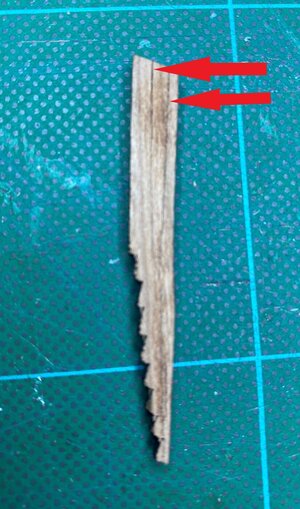
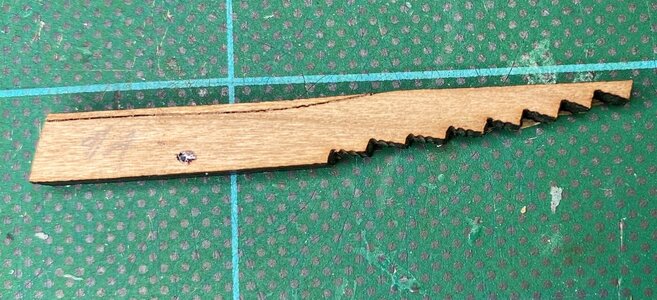

Hi Poul, we are all equally confused and that’s probably why no one has done frame one yet if I’m not mistakenI need help again from fellow builders of Le Coureur. I'm puzzled about the beveling /fairing of cant frame 1. Unfortunately the back side of both of these pieces seemed to have catched a little fire or something so it was not possible to see the laserline. After some sanding I can climpse a line but there seems to be 2 lines (maybe even 3). Can that be right?
View attachment 196430
Looking at the front side I'm getting even more confused. If I bevel the upper half of the front side according to the line it will create an opening at both sides of the stem facing forward. That doesn't make sense to me. I'm thinking: Can it be that CAF, for reasons unclear to me, has reversed these 2 parts so that the front side is actually the back side? I'm thinking that maybe the beveling of the upper half could be to accomodate the deck clamps?
View attachment 196436
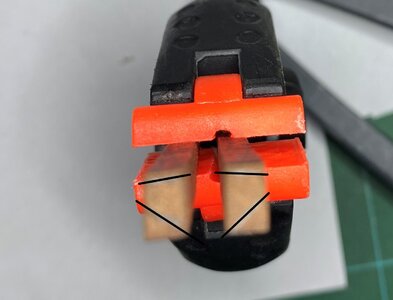
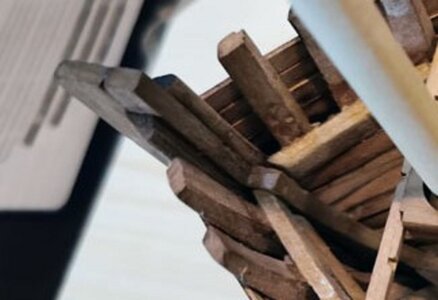
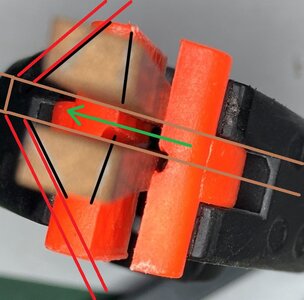
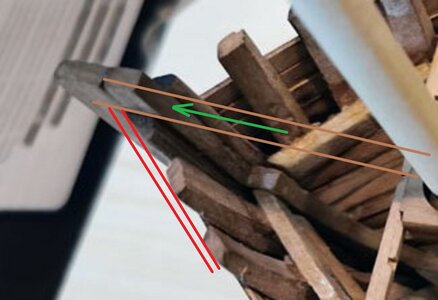
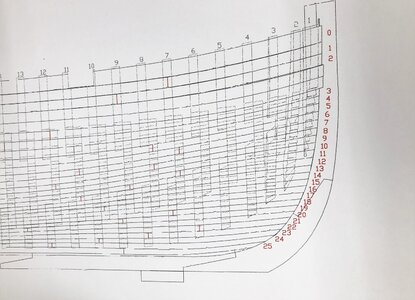
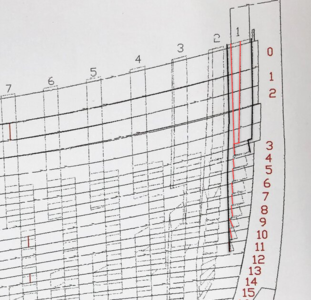
Yes - you are right -the other side would also fit - it would be the green line, or?Many thank you Uwe. Your picture convinced me that my idea is correct. The laser marking fits exactly the red line on the drawing
View attachment 196561
Also I think the angle of the outer planking against the stem is better than it looks on the picture of Tom's build.
The only thing that still bothers me is the fairing against the inside planking of the bulwark
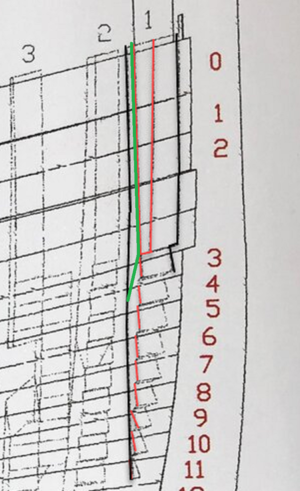
yesYes, But I think it should be something like this
View attachment 196572
